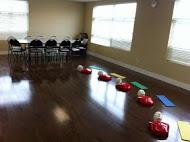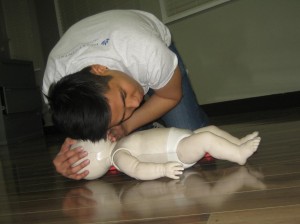CPR and Cardiac Arrest

Cardiopulmonary resuscitation is lifesaving skill used to revive victims of cardiac arrest. When a person gets a heart attack, that means the blood supply to the heart is suddenly cut off. Without adequate blood supply, the heart can stop completely – a condition called cardiac arrest. CPR is meant to address through the use of compressions and ventilation. Compressions allow the heart to pump manually and blood to circulate through the body. Ventilations on the other hand oxygenate the blood through the use of rescue breaths.
The truth about heart disease
CVDs – short for cardiovascular disease – are the leading cause of mortality in the United States and the rest of the world. It is responsible for millions of deaths each year, over 600,000 in the US alone. Despite being largely lifestyle-based, heart disease still kills so many people each year. The risk factors are easy enough to control, but habits can be hard to break. This is why we teach our trainees about the importance of health education and how prevention is still the best management of heart disease.
Basic Life Support
The 2010 Basic Life Support publication from the American Heart Association contains guidelines used by rescuers in the management of cardiac arrest and cardiovascular emergencies. It includes the Chain of Survival as the main focus of CPR, which is made up of five steps: (1) recognizing cardiac arrest, (2) chest compressions and ventilation, (3) defibrillator, (4) Advanced Life Support, and (5) Post-cardiac arrest care.
Other parts of the guidelines include the management of respiratory emergencies, such as choking. Respiratory problems that remain unmanaged can cause cardiac arrest once the body becomes stressed enough. Choking management is typically done through the use of back blows and abdominal thrusts.
Basic Life Support training

Our training programs that cover basic CPR also use the BLS guidelines from the AHA. There are three basic courses available at our training locations, one offered to the public and the rest for health care providers and professionals.
- Heartsaver CPR – basic one-person rescue (public), 4 hours
- Heartsaver CPR C – basic one-person rescue (health care providers), 4.5 hours
- Basic Life Support for health care providers – basic one and two-person rescue and the 2010 BLS guidelines, 4.5 hours (re-certification available, 4 hours)
There are no requirements for any of the programs listed above, but the Basic Life Support for HCPs program is a prerequisite if you want to enroll in advanced courses (ACLS and PALS).
Other training programs
Our other training programs are advanced CPR and re-certification classes.
- Advanced Cardiac Life Support (ACLS) – 16 hours
- Pediatric Advanced Life Support (PALS) – 14 hours
- Basic Life Support for health care providers re-certification – 4 hours
- ACLS re-certification – 5 to 6 hours
- PALS re-certification – 6 hours and 20 minutes / 8 hours and 20 minutes
